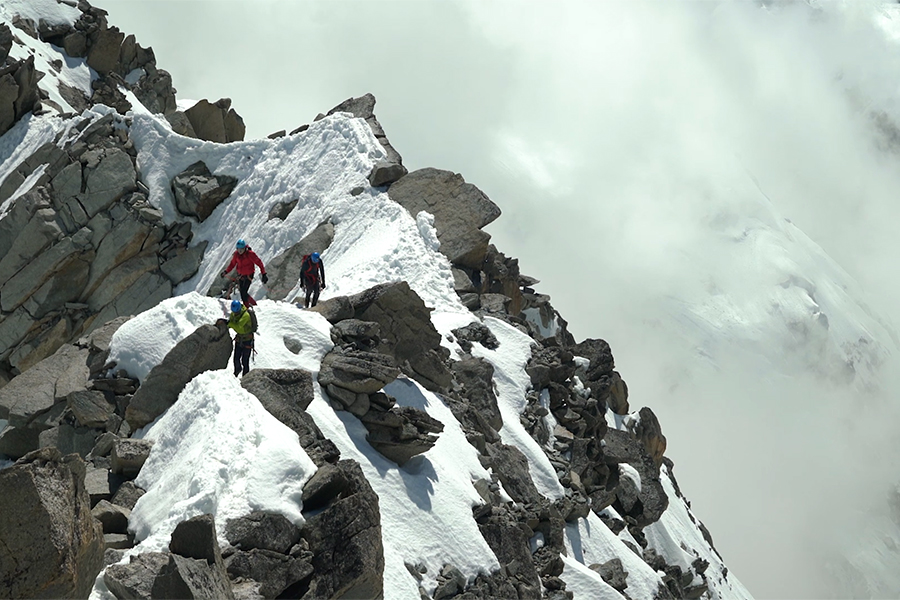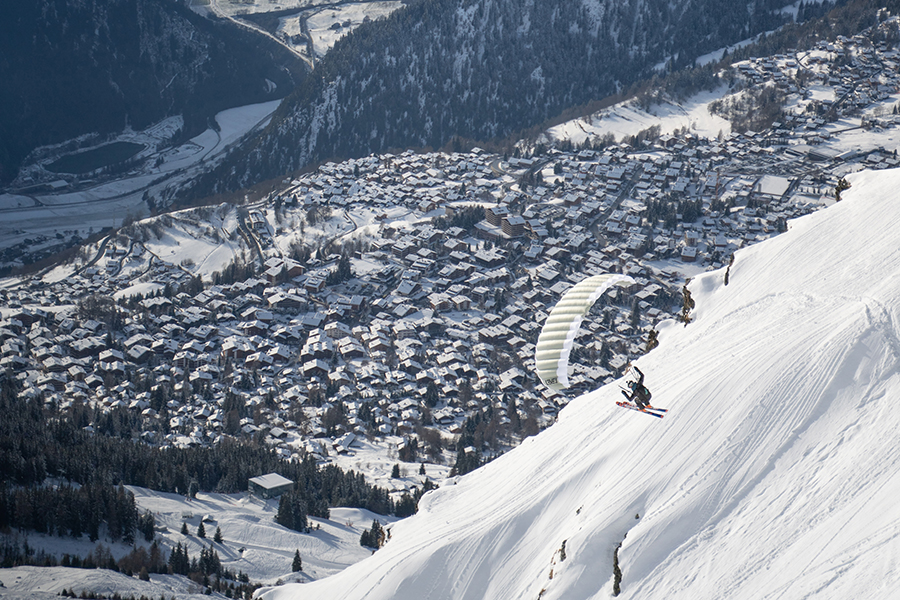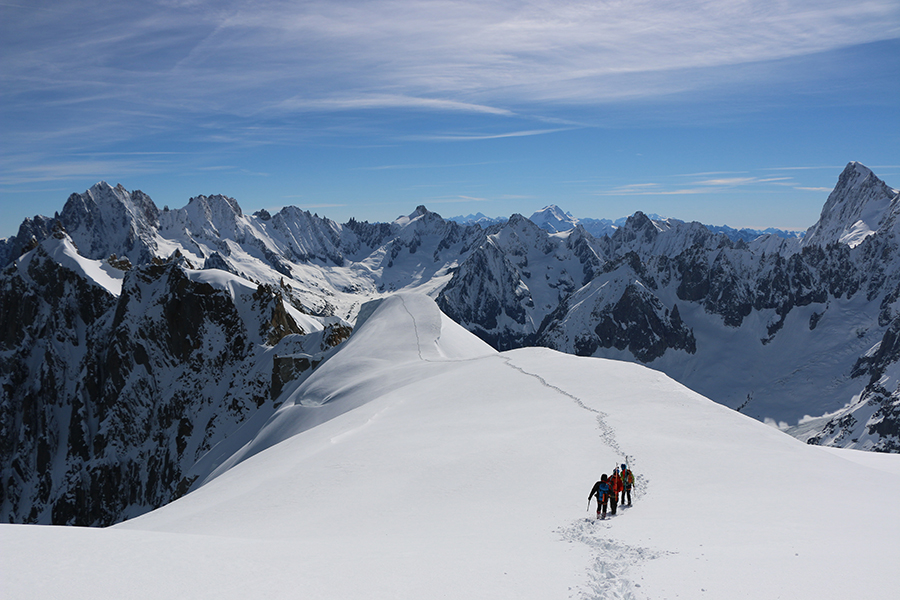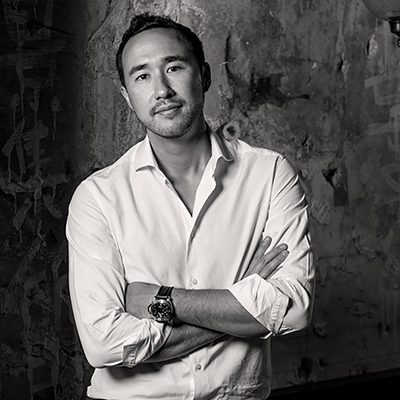Turning your company toward social impact can be scary. What guidelines should you follow? How will you pay staff with an unproven business idea? Fear holds many leaders back, especially entrepreneurs working in uncharted waters.
Malcolm Wood, a British-Chinese restaurateur, at the top of his game in hospitality and food, risks his life to show how rapidly the world’s glaciers are disappearing. Like a young Richard Branson — a serial entrepreneur with some extreme sports thrown in — he took his love for the natural world and created a movie, The Last Glaciers, that would make people sit up and notice. He shares his journey of overcoming personal fear and how business leaders should think as they move toward the social impact economy:
As a kid, I was super scared of heights. To overcome this, I turned to sports that challenged me as a way to confront my fears. Since then, I have been fascinated with challenging myself and my limits in both work and vertical sports. I also went through a period of my life where I worried a lot about the future, death, feeling overwhelmed, and being constantly stressed. My feeling was a combination of being overworked, my personal life not going where I wanted, and a severe injury that saw me lose the use of an arm for two years. Flying and climbing mountains saved me from this downward spiral. It has taught me life lessons about risk management, how to face up to fear and unpleasant facts, and has given me lifelong friends.

Most importantly, it has shown me how to stop time and appreciate the life and beauty around us all. In extreme sport so, you have no choice but to focus on the present. Situations constantly change and require your total focus and attention. It all happens in a moment, with very high stakes on the table. If you can make it through one day at a time with this mindset, that’s all that counts.
You can’t always live life in fear. These experiences help define your identity and help you realize what you want in life. You can’t keep it all in your head as a fantasy because real life is messy and weird. But it can also be great — if you embrace it. In adventure sports, you’re constantly assessing risk. It’s part of every preparation: the decision to step out the door, define your objective, and continually evaluate to see if that objective might be yours today. People often say the higher the risk, the higher the reward. I can’t weigh the risk against the reward without thinking about the loss I may experience if things go wrong. But I also can’t camp in that headspace for too long. The riskiest things can give you the most joy (and potentially the most profound grief), and I’d rather do my best to calculate those risks well and not be held back by imagined failures. Life is too short to stand on the shoreline.

The Last Glaciers: a Push Outside my Comfort Zone
People will look at our film — the mountaineering and paragliding — and think we are reckless and crazy. What you won’t see is a long dedication to learning: the many training courses in which we invested; hours of training and briefings; risk analysis chats over multiple dinners, meetings, and coffees; safety courses, and the number of flight hours that we needed to rack up to ensure we had the right level of experience before executing our plans.
I have a photograph of myself, director Craig Leeson, and our lead cameraman Cody Tuttle on a summit in Peru, trying to smile for the camera. We were deeply exhausted. We had climbed almost 20,000 feet twice within 24 hours: once to try and reach the summit, and again to try and fly off it to get some aerial shots of the glaciers below, a feat never before achieved in a tandem glider. Putting these goals together was the hardest physical thing we ever did during the movie’s creation. We had tons of setbacks on the expedition: a crashed drone, missing camera parts, broken pro cameras, motorbike crashes, everyone getting altitude sickness from a too-fast ascend…the list goes on. Nevertheless, we pushed ourselves to the limit to create this story, and the experience has changed us forever.
My day job as an entrepreneur focuses on food and beverage, and people often ask me how this is linked to being an adventure athlete. It’s straightforward, I love the outdoors, and cooking and sustainability are embedded in my love for the environment. I’ve been working on our environmental documentary, “The Last Glaciers,” for the past five years. The purpose of the documentary is to showcase the effects of climate change, as highlighted by the diminishing rate of glaciers on the world’s mountain ranges and polar ice caps, and clarifies the multiple contradicting messages presented to the public and remove any doubt that climate change is a grave concern.

Consumers are now demanding sustainability from businesses where they choose to spend their money. We must adopt these new practices not only to better the planet – which is the most important thing – but also to preserve our industries in the long run. So sustainability is hugely important to me and my businesses. We try to look at sustainability as a whole and use it to shape what we do. Yes, it’s more expensive to do things that way. Yes, it’s more effort and sometimes not 100% possible, but we all need to work on doing business in an ethical manner — and we need to start somewhere.
Business can be challenging. You never know for sure the outcome of all your efforts, and you can’t see unforeseen challenges. Tough times are inevitable, but how you compose yourself during these times defines you and will define your future. Never forget the fundamentals that shaped you, and when things seem like they are breaking down, go back to basics.




































